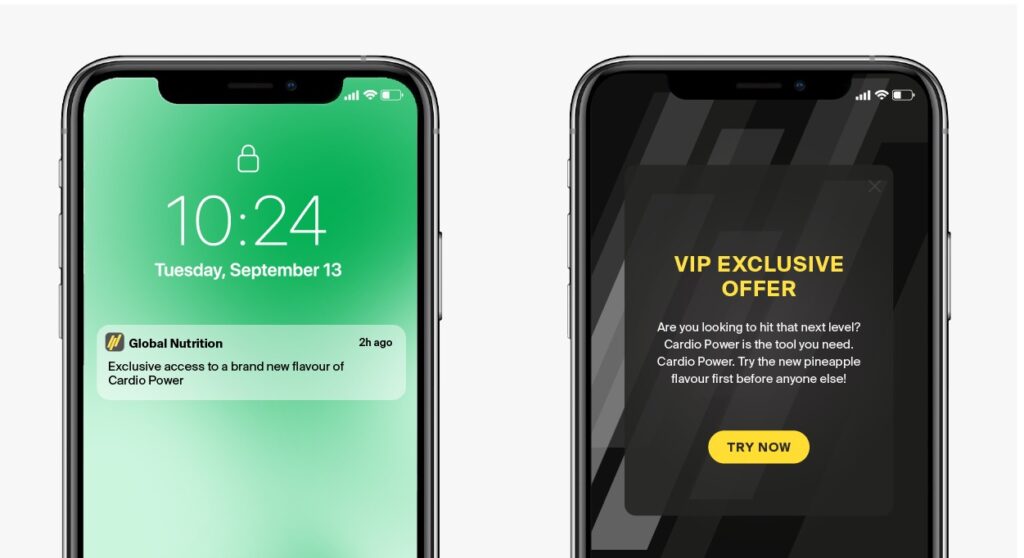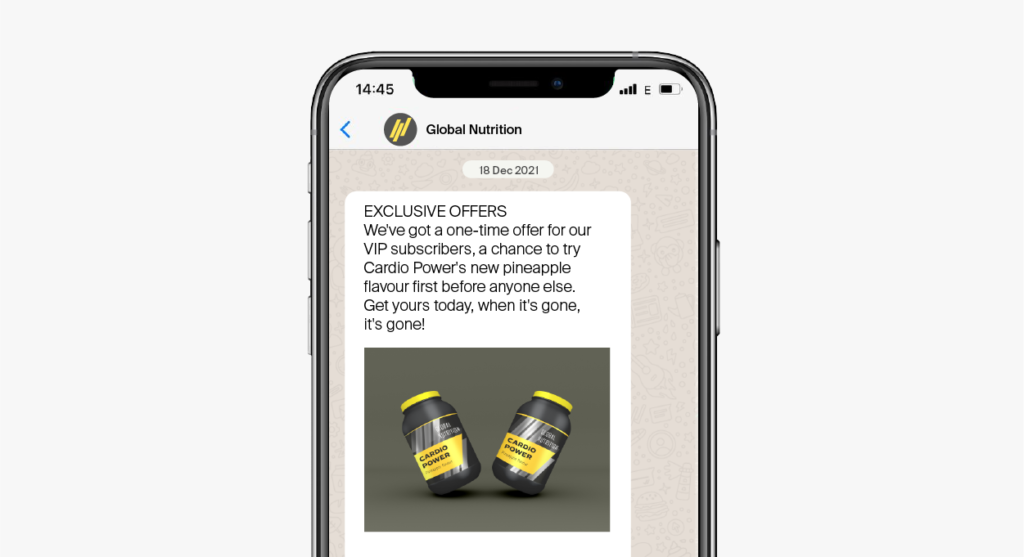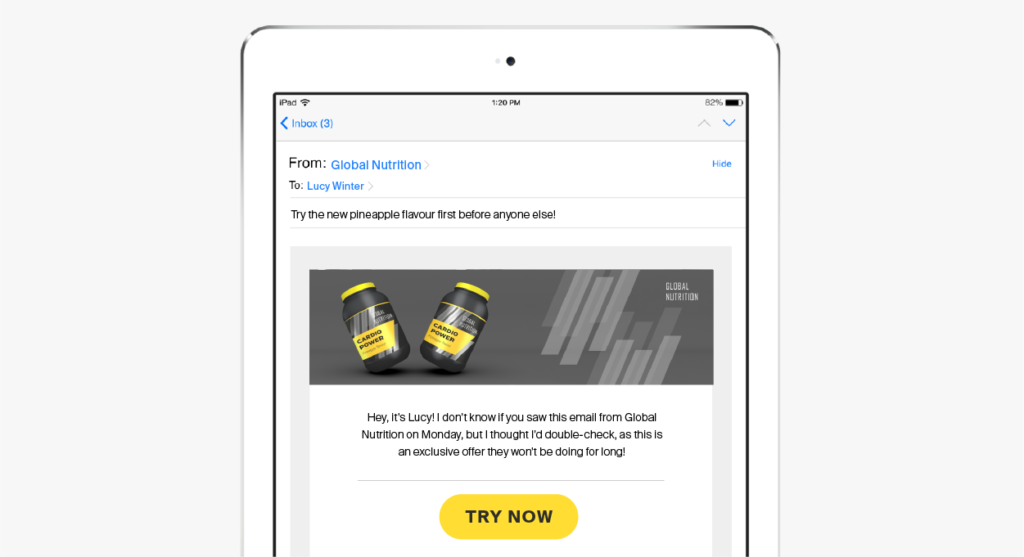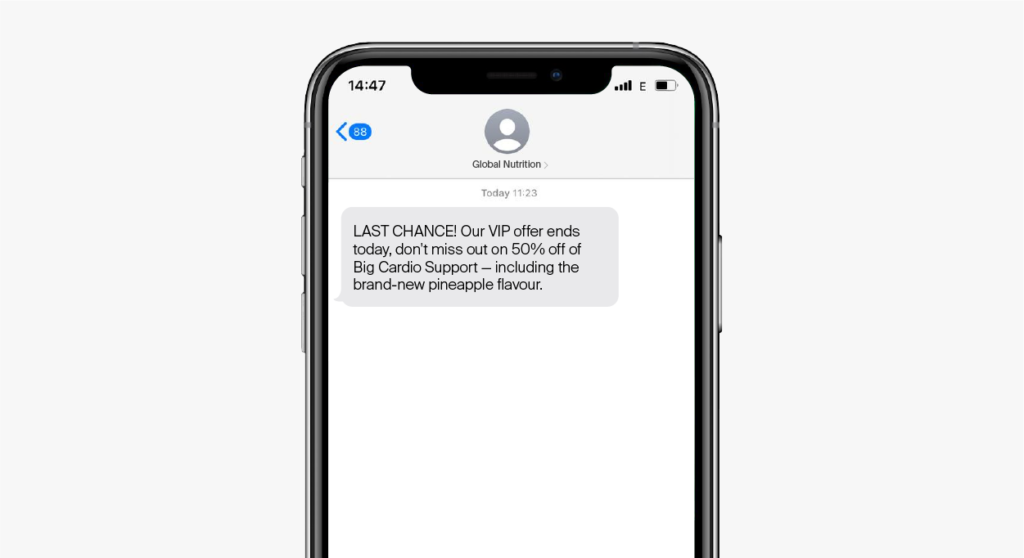Did you know that companies that use multichannel marketing experience 3x higher effectiveness rates than those that use non-integrated campaigns? That’s what Heinz Marketing found when they conducted a study on multichannel marketing back in 2017. But what about today? 52% of marketers used three or four channels to reach consumers in 2020, up from 44% five years previously.
We know that implementing a multichannel marketing strategy can be intimidating. Managing multiple channels with different best practices, delivery methods, and integrating all the messaging can be a challenge, but it doesn’t have to be. In this article, we’re going to take you step-by-step through an example campaign that you might even be able to apply to your business!
What Channels Can You Use?
- SMS — One of the largest and most effective channels available to marketers. Almost everyone in the world has a mobile device capable of receiving SMS, and messages sent via SMS have a 98% open rate which dwarfs other options. But the downside is that SMS is text only, so if you want to send images, you’ll need to use another channel.
- RCS — the next generation of SMS. With RCS, you can send rich media like images or links, but it’s not yet as common as SMS.
- Email — almost everyone has an email address in the modern-day as it’s required for so many things. You’re able to send images, links, videos, and all sorts of content types via email, but the downside to it is that spam filters and apathy to email causes less than 20% of emails to be opened, and only around 2% of those recipients click links found in the message.
- Viber — one of the most popular messaging apps in the world with over 1.1 billion users worldwide. Viber has all the benefits of RCS in that you can have rich media like images and links, but the downside is that users will have to have signed up for an account and have the app installed to receive your messages.
- WhatsApp — has 2 billion users and all the technical capabilities you’ll find in Viber and RCS, though penetration in the USA is still lacking, which could impede progress on global campaigns. You also have the same negative as Viber: people need to sign up for an account and install an app.
- Push notifications — these are the notifications sent directly to mobile device users using a mobile app. These will pop up on the screen when using your mobile device, even if not using the app in question. They’re great for shorter content in a similar way to SMS, but they’re also very easy to disable, so you’ll want to make sure you don’t overuse them and annoy your recipients. You can share images and links in push notifications, but you’ll need to factor in those different devices, and operating systems can show your notifications differently.
The Multichannel Marketing Campaign Steps
Our campaign is centred around a sports nutrition company called Goal Nutrition. Their main product is an athletic performance supplement called Cardio Power, a pre-workout energy powder. For this example, we will assume that they’ve already run a campaign to collect subscribers and have a healthy contacts list.
We’re going to send three messages over five days leading up to a new product launch. Goal Nutrition is launching a new flavour of Cardio Power and are looking to get a big sales bump from this new product.
Monday — Push Notification
To start our campaign, we will be sending an initial push notification linked to a special page in our app that is loaded with information about the new product. We include rich media images and links to a themed landing page for our offer. This message is framed as a special VIP offer, letting our subscribers in the door early to get exclusive access to this new flavour.

Wednesday — Follow Up With WhatsApp
So for the second message we’re going to start segmenting our audience into different groups:
- People who opened the notification and bought something
- People who opened the notification but didn’t buy anything
- People who didn’t open the notification
Each group is going to get a different message from us. Apart from the first group who’ve taken our intended action and bought something, we’re taking them out of the campaign from here and moving them to another campaign designed to nurture and look after our previous customers.
We will be taking advantage of the multiple channels open to us to send communications via two different channels, starting with Viber and WhatsApp. Combined Viber and WhatsApp accounts cover approximately half of the world’s adult population with three billion users, so we feel pretty safe in sending our follow-up here. We want to use rich media and images, which is why we’ve chosen this format.
The plan here is to set one of these messenger apps as the primary and one as the fallback based on the country the campaign is running in. For example, if you’re running a campaign in Pakistan, you’ll want to use WhatsApp, as it has 46.2 million users there and is the #1 OTT messenger in the country. Using our CPaaS service, we’re able to set another channel as the fallback. So if we send a Viber message and it’s not delivered, the system will automatically send it via another channel, like RCS or SMS.
For the group who opened the notification but didn’t buy anything, the message here is short, simple and to the point. We’re hoping here to catch everyone who maybe didn’t read the whole landing page or who just weren’t grabbed by the notification in the first place.

But what about the people who didn’t even open the original notification? For them, we have something a little different. Global Nutrition sponsors a popular fitness influencer, and we’re going to be emailing subscribers a personal message from this influencer. Email works well for something like this, as you can set the sender’s name to be whatever you like.

Friday — The Last Chance SMS
The last message in the campaign is the last chance on two fronts — it’s our last chance to try and convert our subscribers in this campaign and the subscriber’s last chance to get in on this offer! To drive home the urgency, we’re going to be using SMS. As we said before, 98% of SMS are opened, and on top of that, most of that 98% will be opened within three minutes of receipt. SMS is an intimate channel, too, as most people use SMS to talk to their closest friends and family. The urgency and the intimacy of the channel are why we’ve saved it for last. SMS is our trump card, and we don’t want to overuse it.
The content of this message will be lacking in rich images because it’s SMS, and we’re going to keep it short and to the point, emphasising the lack of time remaining. This will be going to all subscribers who haven’t yet made a purchase, as there’s no need to segment them at this point.

Closing Thoughts
This isn’t the only way to do a multichannel campaign, of course. There are infinite combinations of the channel, message, content and more. You might want to use video where we’ve used images, or you might be trying to cultivate memberships and subscriptions instead of purchases. The above campaign will work in many cases, but minor tweaks and changes to better suit your goals can drastically improve your return. However, if you’re going to make changes, you need to keep the following in mind:
- Segment your audience — don’t treat engaged subscribers the same as people who don’t read your messages
- Choose the right channel for your messages — SMS is great for quick and important messages, OTT messengers are best for sharing images and links and so on.
- Have an end goal — know what action you want them to take.
- Analyse your results — throughout the campaign, look at your results; how many people unsubscribed? If the negatives are higher than expected, tweak your sending cadence or content. If they’re higher, how can you replicate this in future campaigns?
- Make plans for the future — plan your follow up. Maybe send a survey to users who didn’t make a purchase or ask those who did to leave reviews. You’ve got data on your list, now is time to take advantage of it.
Running a multichannel marketing campaign step by step isn’t easy. If it were, everyone would do it. But something that can take a lot of the load off your marketing team is using the right tools for the job. Sending messages across multiple channels, even in multiple countries, has never been easier than with a CPaaS solution. If you’d like to kickstart your multichannel marketing, get in touch with one of our experts today.

